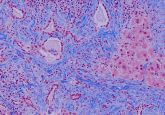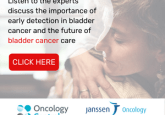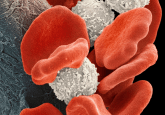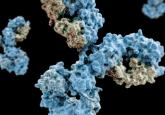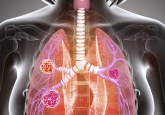Key challenges and opportunities to advance bladder cancer care
Important information
The following feature is intended for healthcare professionals in the EMEA region only. The following feature is not intended for UK HCPs. Please tick the box below to confirm that you are a non-UK healthcare professional in the EMEA region.
Meet the speakers:

Daniel de Schryver – Patient Engagement & Advocacy Lead, Janssen
As Patient Engagement & Advocacy Lead, EMEA at Janssen, Daniel De Schryver is part of a global multi-functional leadership team that helps the company to engage with patients in a systematic way and helps to build partnerships in developing solutions that better meet the existing needs. During his time at Janssen, Daniel has also worked as Global Communications Lead, Infectious Diseases and Vaccines.

Alex Filicevas – Executive Director, World Bladder Cancer Patient Coalition
As Executive Director at World Bladder Cancer Patient Coalition, Alex Filicevas is a passionate cancer patient advocate focused on driving meaningful change in cancer research, policy, and care. Alex is also President of All.Can International and a EUPATI fellow. Filicevas leads the efforts to foster an international community of strong bladder cancer patient advocates and organizations around the world, empowering patient voices across research and care continuum.

Dr Ignacio Durán – Medical Oncologist, Marques de Valdecilla University Hospital, Santander
As a Medical Oncologist with interests in clinical and translational research and teaching, Dr Ignacio Durán is currently working at the Medical Oncology Department of Hospital Universitario Marques de Valdecilla in Santander, Spain where he leads the GU oncology section. Dr Durán is a member of the American Society of Clinical Oncology (ASCO), the European Society for Medical Oncology (ESMO) and the Spanish Society of Medical Oncology (SEOM). His major interests are genitourinary tumors, neuroendocrine tumors, and anticancer clinical drug development.
Transcript:
DDS: Welcome to this special podcast episode sponsored by Janssen. Today we will explore the unmet needs in bladder cancer. We will cover challenges and opportunities in the current disease landscape and the future of care. My name is Daniel De Schryver. I am the regional patient engagement and advocacy lead for Janssen and I am also a bladder patient. I was diagnosed in March of this year and underwent two surgeries, and I am now currently on Bacillus Calmette-Guerin (BCG) treatment. So this podcast has a particular personal meaning to me.
Today, I am joined by Dr Ignacio Duran who is a medical oncologist at the Marques de Valdecilla University in Santander, Spain, and Alex Filicevas who is the Executive Director of the World Bladder Cancer Patient Coalition. My first question is to you, Dr Duran, what is the current disease landscape for bladder cancer in Europe?
ID: Thanks for including me in this podcast that I think is very relevant for the patient community. I mean to give you a very brief summary of what bladder cancer means, I think the first sentence would be bladder cancer, I think, is a global medical challenge. Just a few numbers –about half a million people are diagnosed every year worldwide with bladder cancer and there are about 200,000 deaths related to this tumor. I think that is remarkable. If we go to the European level, it’s about a 150,000 new cases per year. It’s a relevant medical problem and sometimes we complain it does not get all the attention that it deserves.
DDS: Can you describe the key stages in bladder cancer and the different types of bladder cancer?
ID: First of all, let me explain how bladder cancer develops. The bladder, and also other parts of what we call the GU tract, are covered by some specific cells called urothelial cells. Related to urothelial cells, for different reasons, there are a number of risk factors and sometimes just by chance, they may grow in an uncontrolled fashion, so they may develop cancerous cells. When that happens, there are two major families in bladder cancer. There are the tumors that we call non-muscle invasive, and their roots are not deep enough to go into what we call the muscle level of the bladder. These tumors represent the majority. We are talking about 70–75% of the tumors.
The other big family is the tumors that are muscle invasive. When they grow, their roots go to the muscle layer or even beyond that. That would be the general picture of how bladder cancer can present.
DDS: Do we know if there are key causes or symptoms? Are there any risk factors?
ID: I think this is very important to take into account. If we had to summarize risk factors, the two with more solid data are smoking or exposure to certain chemicals. If we quit smoking, we could largely decrease the number of new diagnoses of bladder cancer. That’s the main risk factor and it’s one that we could intervene on. You are asking me also about symptoms, how does bladder cancer present? This is something that I think goes in favor of bladder cancer because it’s one of the tumors that may present with some warning. As I said before, this tumor develops from abnormal growing from the urothelial cells that are actually lining the whole GU system at the end. When there is an abnormal growth, normally that is going to cause a little wound and that wound is going to bleed. One of the key symptoms of bladder cancer is blood in your urine, which we call hematuria. That’s one of the most common.
There are other symptoms from localized disease, like burning or urinary urgency. If those symptoms persist, it’s when we have to look for medical attention. This has to do with the localized disease, when the tumor has spread, sometimes patients may deal with other symptoms related to the invasion of distant organs. Sometimes it’s pain because of bone invasion, sometimes it may be difficult to breathe because of invasion of the lungs or even some fluid in the lungs and so on.
DDS: What are the current diagnoses and the treatment approaches that we can offer?
ID: The diagnoses basically mean that 90% of the time, it’s going to go through urology. A typical patient generally would be somebody who presents with symptoms, let’s go to the most common symptom which is blood in the urine, then, initially you may be handled by your primary care doctor. Blood in the urine also goes with other things that is not bladder cancer. It’s a common finding in urinary infections. But if that blood in the urine persists and also if there is a clinical context, you have been a smoker, you have a certain age, etc., then you are going to be seen by urology. Then the urologists are going to do a number of tests. Mostly they are going to analyze your urine, looking for cancer cells. They are going to do some imaging tests to look at your bladder. And finally if there is anything suspicious, they are going to go into your bladder by that test called cystoscopy.
They are going to explore your bladder, and if they find something relevant, then they will take you to a biopsy, what we call a transurethral bladder resection (TURBT). That’s the whole initial diagnosis that you are going to have and that is going to tell us whether you are in the first family – a non-muscle invasive tumor patient or a muscle invasive tumor patient. That is going to completely determine how the patient is going to be treated. Patients with non-muscle invasive, as you are commenting initially, are going to be normally managed with local measures. The TURBT means we are going to remove most of the tumor that we can and that is going to be followed by some local treatments. BCG is the most common, but there are other treatments currently used and some others in development.
With a normal history, a patient with non-muscle invasive bladder cancer has a very good chance of survival. For patients with localized disease, fortunately, the data is pretty good. They may have what we call recurrence. The tumor may reappear, it’s not completely uncommon, and some of them, only a small percentage, may have progression meaning the tumor may go from being non-muscle invasive to muscle invasive.
If we go to this family, the muscle invasive patients, the treatment is completely different. Now we are not dealing with only removing the tumor and instilling some local treatments, we are normally looking at a bigger surgery. We are looking at removing the bladder in many instances, although right now there is a lot of interest in what we call bladder preservation strategies. Muscle invasive tumors need stronger approaches. Normally, what we call perioperative treatment, so we are going to do something before surgery or after surgery, and then we are going to remove the bladder and the prostate in the case of males, and the bladder and the uterus in the case of females.
DDS: Thank you, Dr Duran. Alex, a few questions for you. Can you tell me more about what World Bladder Cancer Patient Coalition is and what they are doing?
AF: Thank you, Daniel, and thank you for sharing your personal experience with bladder cancer with us today as well. World Bladder Cancer Patient Coalition unites the community of global bladder cancer patient advocacy groups and their mission to raise awareness of an often-overlooked disease and provide people with the information they need for their diagnosis. WBCPC was founded in 2019, so we are relatively a young organization, but it’s a committed organization and patient-led. Our ambitions are really high for what we aim to achieve. WBCPC was founded specifically after seeing a lack of patient-led support for people affected by bladder cancer around the world.
Our vision is a world without blood cancer – a big ambition and our work is focused around three areas that I would like to touch on. Raising awareness is one of them, which remains low despite the fact that it’s the 10th most commonly diagnosed cancer in the world and the fifth in Europe as well. Our community study in 2019 found that around half of patients hear about bladder cancer for the very first time during their diagnosis.
Engaging in advocacy is another area of focus, which we recognize as important to drive change in bladder cancer care, both for national and regional level, but also broader internationally. Lastly, I would say the area where we dedicate most of our efforts and care is fostering an international community of bladder cancer patient advocates and this includes supporting the establishment of local groups, providing guidance and support through our capacity building activities, and to ensure that they are strong enough to provide much needed support for people affected by bladder cancer and engage in the advocacy locally.
We have developed a sort of guide for bladder cancer patient groups, which draws from those experiences of existing groups and is available in a number of languages. We are really looking forward to build this resource and for it to be accessible to as many people around the world as possible.
As Dr Duran mentioned already, it is a difficult disease and receiving a bladder cancer diagnosis often means patients are subjected to ongoing tests and treatments and associated side effects that come with it. These treatments negatively impact patient’s physical, psychological and sexual health as well. It is a very isolating disease and so it is essential that patients have a place to turn to for information, for compassion and for support, and especially to talk to someone who is or has gone through something that they are experiencing firsthand today.
DDS: Alex, you have touched upon some of the challenges that the patients face when they are diagnosed with bladder cancer. Can you go more into detail?
AF: If we look at the patient journey and treatment choices, there are a lot of different challenges that come with it, and this also differs depending on the stage of the disease as well. Each person living with bladder cancer faces that unique diagnosis with unique challenges, needs and expectations that come with them. I think we should focus the needs on treating the individual person and not the disease more and more, and multidisciplinary care and multidisciplinary discussions are very, very important to help patients make the right decision.
Of course, it is difficult to organize and it’s time consuming, but we need that shift. When it comes to information and resources, in some countries this is great and plenty, but they are less available in others and not all patients get access to this information. So it is more clinician-driven in many cases and depends on their support. We need the appropriate structure as well to achieve better supportive care and information around the emotional aspects of dealing with a bladder cancer diagnosis. Working directly with those effected, World Bladder Cancer Patients Coalition is actually conducting a study to better portray patient experience from their perspective and to provide insight into what it actually means to live with bladder cancer.
DDS: Alex, can you go a little bit more into detail about what this is study aiming to achieve?
AF: It’s the first important study of this kind that we are undertaking and that we know of at an international scale. It’s the global bladder cancer patient and caregiver experience survey, which aims to identify patient’s realities across entire patient’s pathway. We are going from symptom recognition then to awareness, which we know is low to receiving a diagnosis, access to treatment, support, follow-up care and survivorship. So it’s really, really broad. But we are aiming for it to provide an evidence base for the World Bladder Cancer Patients Coalition and our members and partners across the world to benchmark and better understand the variations in patient experiences. In addition, this means they can also measure progress and impact in the future.
This is launching in various languages as well throughout October, and it’s available on the WBCPC website right now. If I may just touch on championing patient’s voice and the importance of acting on their perspectives early, I think it’s important in the research and treatment landscapes and looking for solutions where we address those needs and we are hoping to uncover some of those, but working closely with patients and patient organizations to get those insights when designing research is important and we have recently held our first World Bladder Cancer Patients Forum where it was wonderful to see not just the agreement for the role of patient’s voice from research to care from amongst different stakeholders, but also eagerness to incorporate it, and we hope this only strengthens in the coming years.
DDS: Alex, what does quality of life really means for patients?
AF: We try to avoid generalizations usually because it’s such a personal experience to patients who are being affected by bladder cancer and patients face challenges of varying degrees and ability to return to activities enjoyed before or ability to discover and enjoy new ones without obstacles is what we should strive for. Improving quality of life with less fatigue, specifically, allows the patient’s family to spend meaningful time together, creating memories and celebrating milestones. This translates into milestones that people never thought they would get to experience such as sharing their stories, creating art, contributing to science and sometimes simply watching the sunrise one more time and sharing these moments with family and friends. Good quality of life also means that carers don’t have to spend so much time taking care of the patient and they have more time and energy for short walks, gardening and enjoying a meal together. It is very personal and it’s the very human side of it, and it is important that we can give these patients the best possible ability to enjoy life and do it well.
DDS: I think, Dr Duran, that brings us to another part that we would like to hear you speak about. What does the future hold for bladder cancer treatment?
ID: Well, thank you, Daniel. It’s a great question. If I had to use a word, I would say the future of bladder cancer looks very promising, and let me explain why that’s my approach or that’s my view. I think we are getting to know better bladder cancer’s Achilles’ heel, like those points where the tumor can be effectively attacked. This better knowledge of what we call the molecular biology of the tumor has opened many opportunities for treatment and there is very intense drug development around bladder cancer right now, and I think this is very important and people should be aware of that.
We have welcomed a number of different compounds, not only have we improved the way we deliver chemotherapy in the last few years, but we have welcomed drugs like immunotherapy. We have welcomed drugs like antibiotic drug conjugates. We have welcomed drugs that are, what we call, targeted therapies, which are actually going against a particular alteration in the tumors what we call mutations or fusions. Those are only three examples of new drug classes that are arriving to the bladder cancer therapeutic arena and that hopefully in a few years are going to significantly improve the outcomes. We should not forget that right now patients with metastatic disease, their 5-year overall survival is less than 10% and that is clearly an unmet need. We need to fight to increase those numbers, but I am optimistic, believe me Daniel.
DDS: Thank you very much. I thought this was very insightful, at least even for me as a bladder cancer patient myself, and I hope that the audience feels the same. Thank you very much, Dr Duran. Thank you very much, Alex Filicevas. And thank you everyone who helped making this podcast.
The opinions expressed in this interview are those of the speakers and do not necessarily reflect the views of Oncology Central or Future Science Group.
Commissioned and sponsored by:

